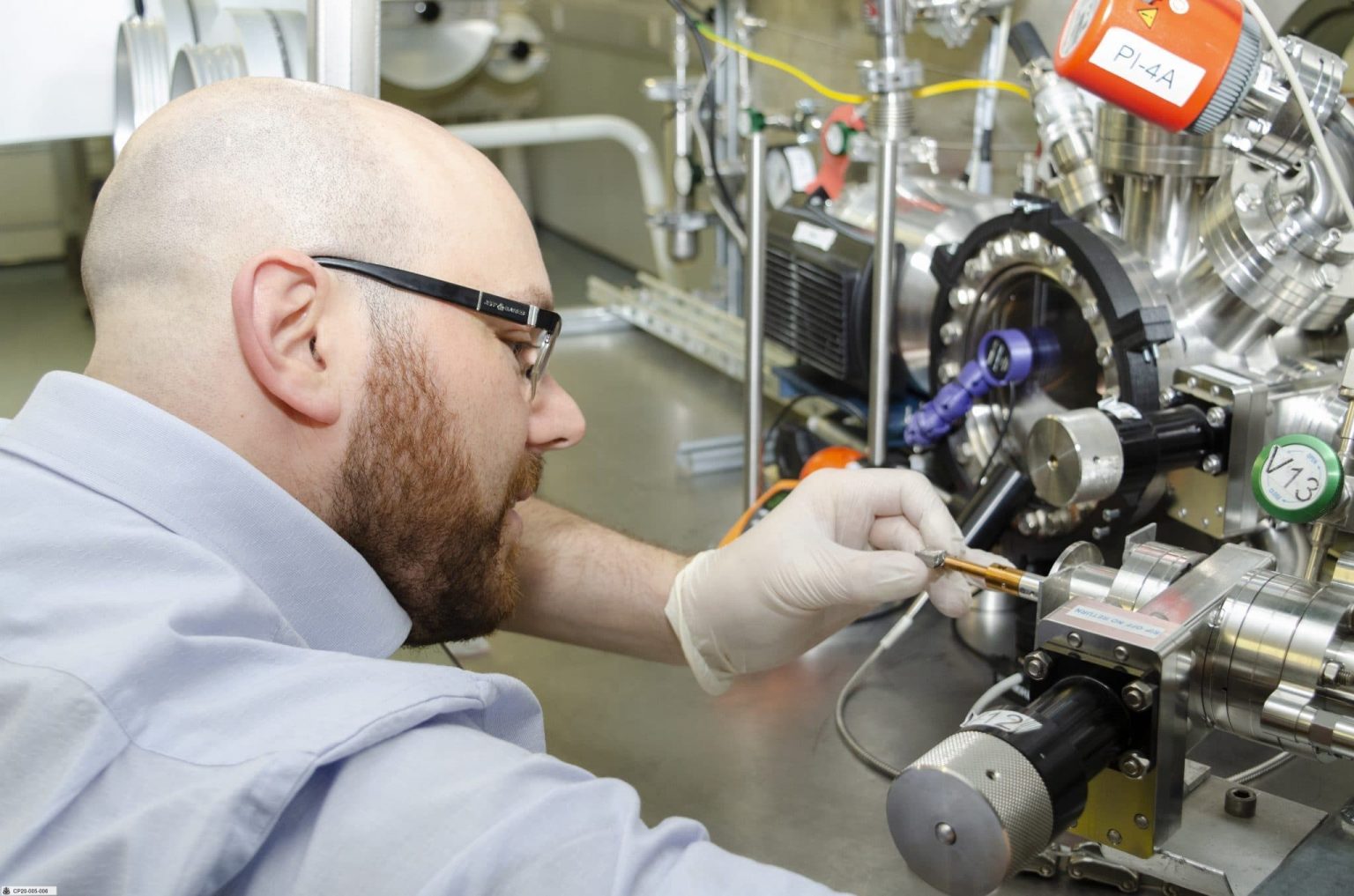Scientists at CCFE are collaborating with academics at the University of Bristol on a cutting-edge technology with the aim of creating diamond batteries, which could provide decades or thousands of years’ worth of energy without a recharge. The batteries would be powered by small amounts of graphite, extracted from nuclear reactors, offering the fusion industry the opportunity to recycle both carbon-14 and tritium.
H3AT(Hydrogen-3 Advanced Technology) facility is a world-first tritium research centre. It studies how to process, store and recycle tritium, one of the fuels that will supply fusion power stations, with technical support supplied by UKAEA experts. It will draw on UKAEA’s expertise from operating JET – the only fusion experiment currently equipped to use tritium fuel.

A team of physicists and chemists from the University of Bristol have grown a man-made diamond that, when placed in a radioactive field, is able to generate a small electrical current. Unlike the majority of electricity-generation technologies, which use energy to move a magnet through a coil of wire to generate a current, the man-made diamond is able to produce a charge simply by being placed in close proximity to a radioactive source. Tritium scientists at Culham’s Hydrogen-3 Advanced Technology facility (H3AT) are at the early stages of establishing a pilot project which could see them eventually become partners in establishing a production line for the diamond batteries. Despite their low-power, relative to current battery technologies, the life-time of these diamond batteries could revolutionise the powering of devices over long timescales. The actual amount of carbon-14 in each battery has yet to be decided but one battery, containing 1g of carbon-14, would deliver 15 Joules per day. This is less than an AA battery. Standard alkaline AA batteries are designed for short timeframe discharge: one battery weighing about 20g has an energy storage rating of 700J/g. If operated continuously, this would run out in 24 hours. Using carbon-14 the battery would take 5,730 years to reach 50 per cent power, which is about as long as human civilization has existed.
Bristol is currently working with Culham to form a spin-out company and set up a pilot run of making these devices. They would look at producing 10,000 or 20,000 devices a year, but ultimately want to be producing millions of devices annually and are willing to address through further R&D projects or new businesses, computer chips, smoke alarms, pacemakers, or small satellites could all be operated by such a device.
There are no moving parts involved, no emissions generated and no maintenance required, just direct electricity generation. By encapsulating radioactive material inside diamonds, it turns a long-term problem of nuclear waste into a nuclear-powered battery and a long-term supply of clean energy. The battery would be powered by small amounts of graphite from former nuclear reactors – presenting the opportunity to recycle both carbon-14 and tritium into micro-power diamond devices. It is predicted that each battery would be very small, early estimates suggest 50kg of carbon-14 would be sufficient for millions of units.
The short lifespan of conventional batteries means they either cannot be used or have significant drawbacks in situations where it is not feasible to charge or replace them. For example, pacemakers, satellites, high-altitude drones or even spacecraft are low-power electrical devices where long life of the energy source is needed.
Early estimates from researchers suggest only 50kg of carbon-14 would be sufficient to generate millions of batteries. Early planning has started to generate a production line, producing this technology but at this stage the economic value of the project has not yet been realized.
You can also get in touch with us if you need any support